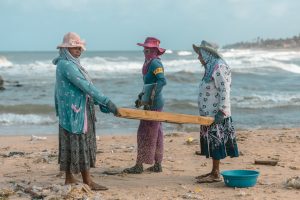For the past four years, Asunta, Malkanti, and Chamari Randika have come each day to clean beaches in Sarakkuwa, a coastal village near the southern end of the Negombo Lagoon in Sri Lanka.
Using rectangular metal sieves, they collect lentil-sized plastic pellets – known as nurdles – that still remain embedded in the sand. This painstaking work now relies on about 30 local women, each earning roughly 4,000 rupees (around $13) per day in exhausting, hot conditions.
In May 2021, the cargo ship X-Press Pearl caught fire and sank, releasing 1,680 metric tons of plastic nurdles and 9,700 metric tons of polymer resins, along with numerous hazardous substances such as sodium methoxide, sodium hydroxide, nitric acid, and lithium-ion batteries.
Days after, between May 29 and July 11, billions of burnt and unburnt nurdles washed ashore. The mess centered on Pamunugama Beach in Sri Lanka, prompting a massive cleanup involving 19,000 workers. Initial contamination enveloped an 80-kilometer stretch of Sri Lanka’s western coast before spreading along a vast area 750 kilometers from Negombo to the north in Mannar.
According to a United Nations report, it was the largest plastic spill ever recorded, involving an estimated 70 to 75 billion nurdles, which resist natural degradation and take hundreds of years to break down.
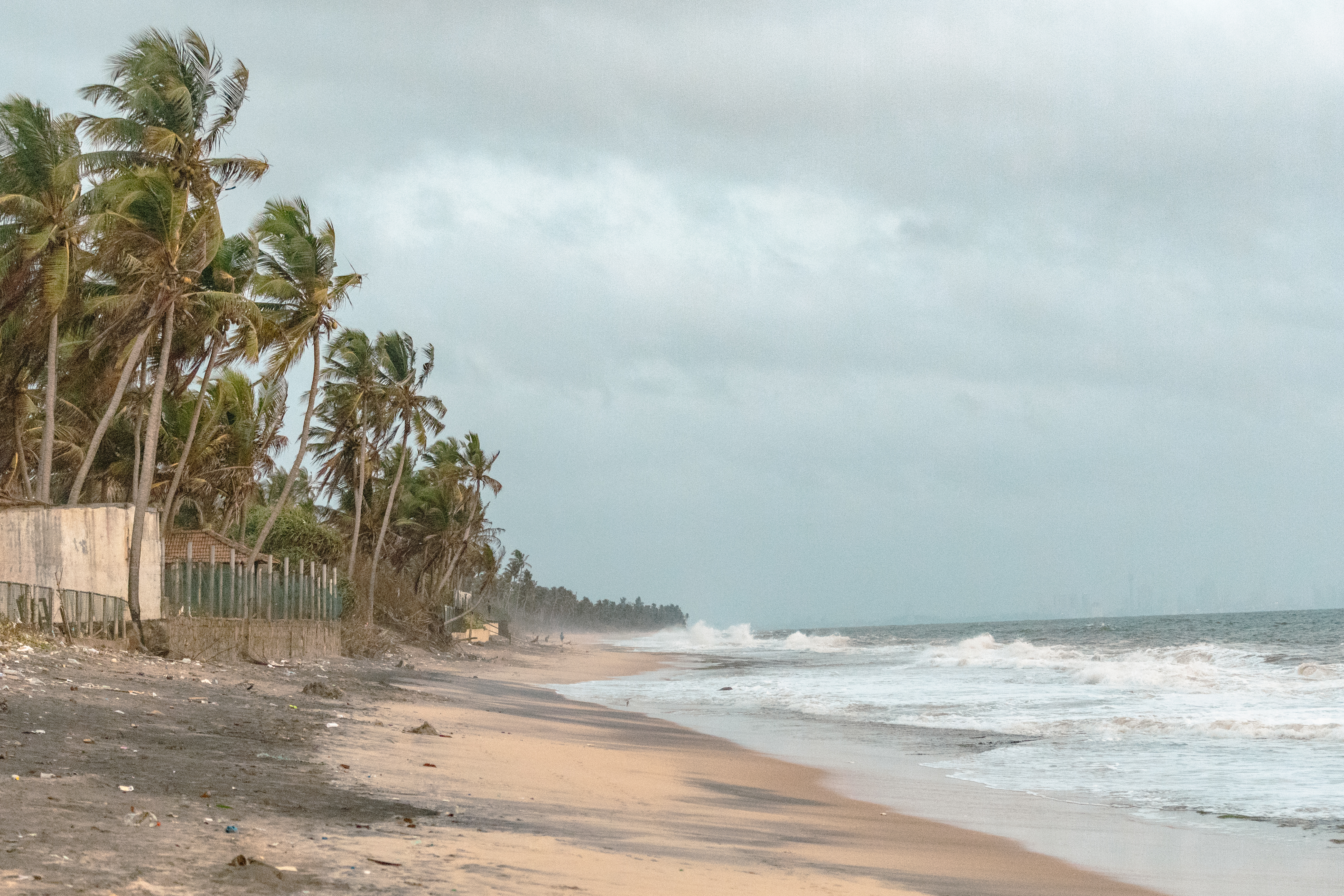
Sarakkuwa Beach in Negombo, Sri Lanka, where billions of burnt and unburnt nurdles washed ashore in 2021 and continue to be found along the coastline today. Photo by Nicholas Muller.
The 2021 spill dwarfed previous nurdle accidents, such as the 150-ton nurdle disaster in Hong Kong in 2012 and New Zealand in 2011, and spills along the coasts of Norway, France, and South Africa. Four of the largest nurdle disasters have happened in the Asia-Pacific.
Once released into the sea, nurdles rapidly disperse across wide areas driven by currents, waves, and wind, making containment close to impossible. Since 2021, nurdles have permeated Sri Lanka’s beaches, coastal habitats, mangroves, and estuaries, “suffocating” local ecosystems.
Used as raw materials in plastic manufacturing, the pellets are often mistaken for food and ingested by marine life because they resemble eggs. At least 470 turtles, 46 dolphins, and eight whales have washed ashore with nurdles found inside their bodies, and others have suffered severe burns likely caused by chemicals from the ship.
Sri Lankan marine biologist Dr. Asha de Vos, executive director of Oceanswell, has helped map confirmed nurdles sightings through the Nurdle Tracker crowdsourcing project, which shows the presence of nurdles far from the spill site – even on Sri Lanka’s east coast and remote Maldivian islands.
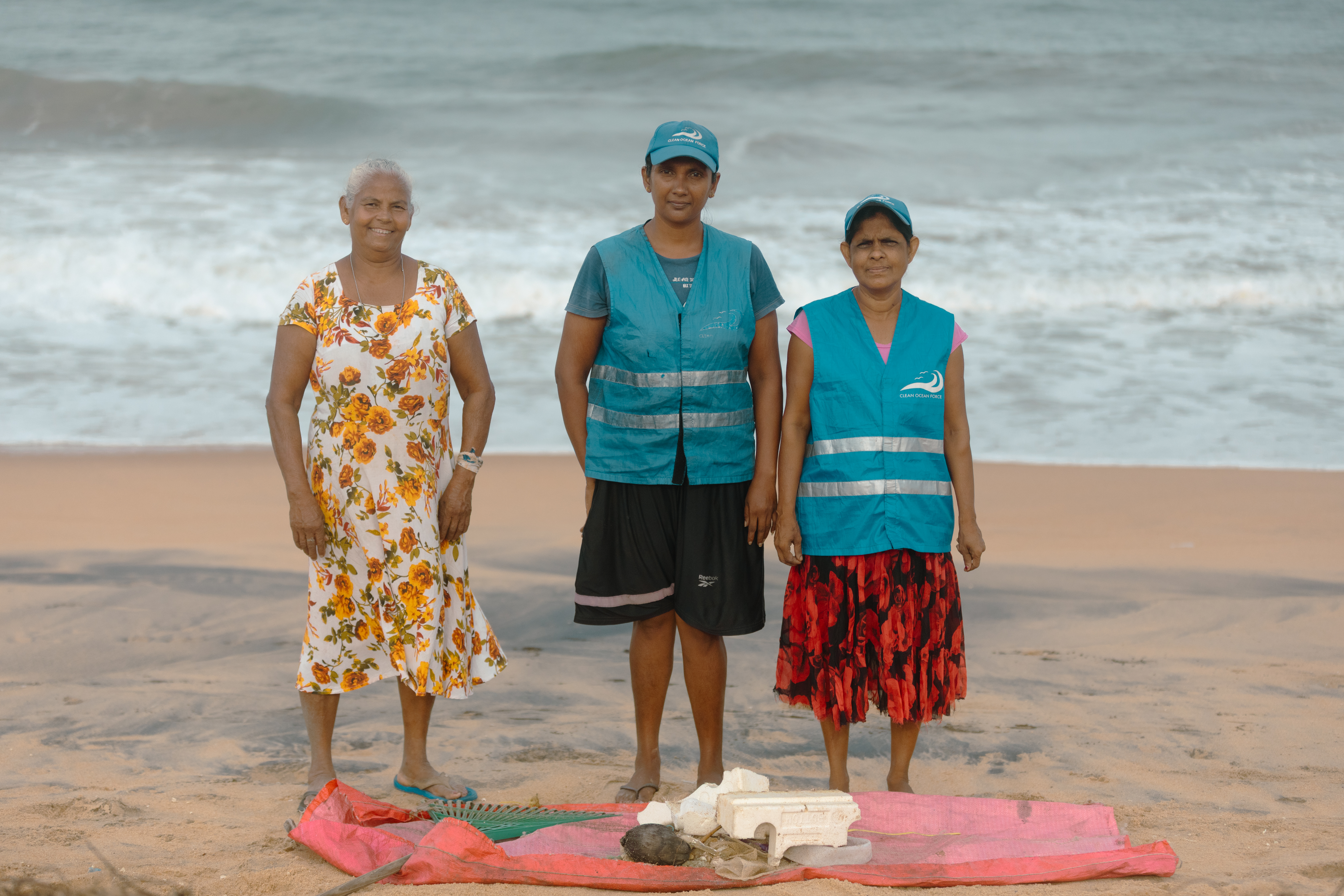
Royani Merian of the Sri Lankan NGO Clean Ocean Force works on a beach cleanup at Sarakkuwa beach. Photo by Nicholas Muller.
Currents will continue to carry nurdles ashore for years, both locally and further afield, polluting vital ecosystems like the Negombo Lagoon. Scientists also predict monsoon shifts will trap pellets within the Indian Ocean for decades, with nurdles expected to reach countries’ shores ranging from Indonesia to Somalia.
The environmental menace wrought by nurdles is part of a larger surge in plastic production and trade. Nearly half of the global plastic pellet trade now occurs in the Asia-Pacific, heightening the risk of spills along some of the world’s busiest shipping lanes where vulnerable island nations like Sri Lanka sit.
Plastic nurdles rank as the world’s second-largest source of primary microplastic pollution, behind only tire dust, according to Scottish charity Fidra. Over 4.5 million tons of nurdles are estimated to have entered the environment directly from the plastic supply chain, enough to blanket a city the size of Bangkok.
Annually, an estimated 11.5 trillion nurdles enter the ocean, adding to the already existing total of 57 trillion microplastic particles in marine environments.
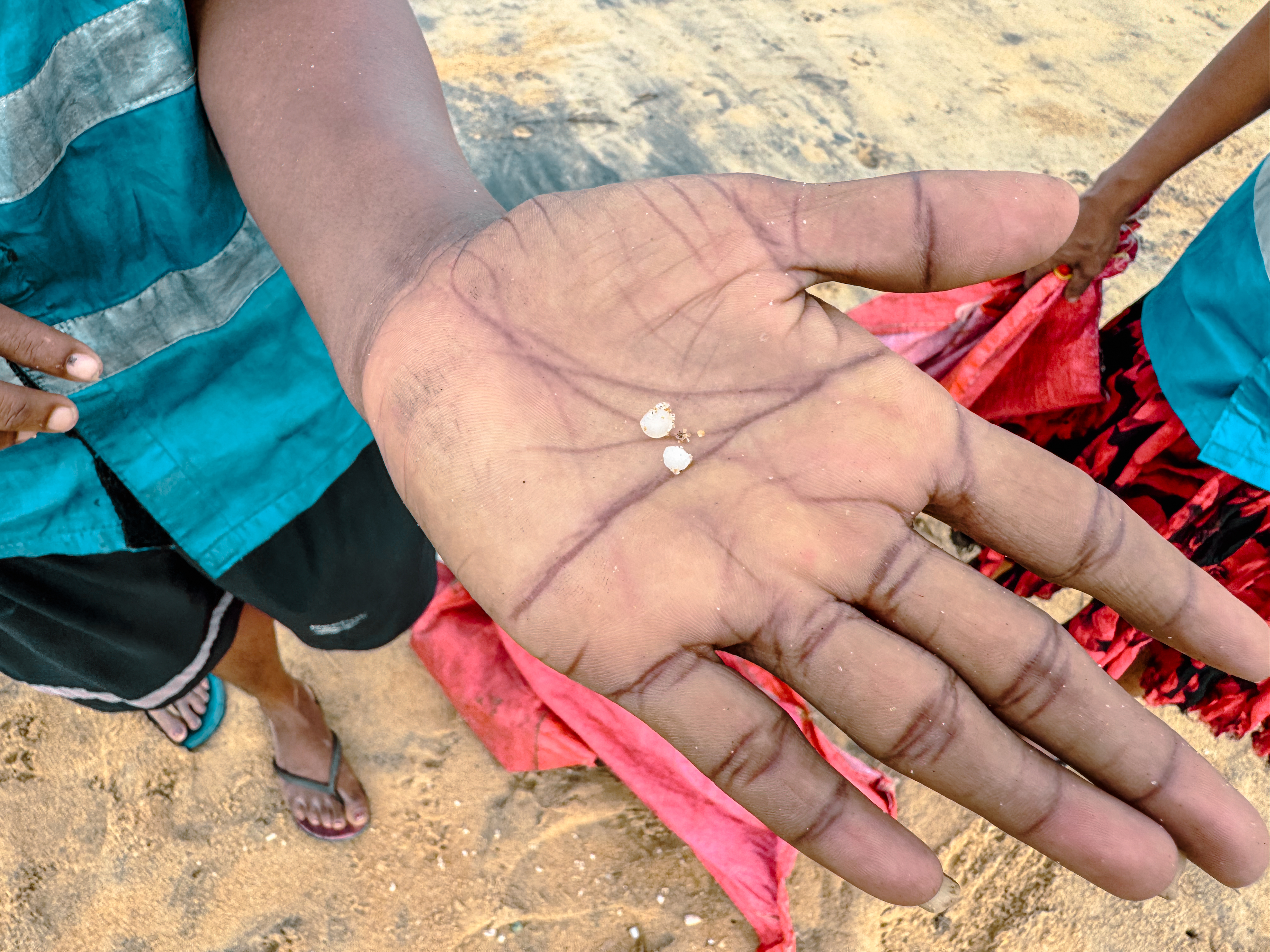
Royani Merian holds two plastic nurdles. Photo by Nicholas Muller.
Recent research from Manchester Metropolitan University reveals these pellets increasingly act as “chemical sponges,” absorbing dangerous pollutants from the ocean. The toxic burden of nurdles is especially severe for those scorched in the ship’s fire, which contain hazardous metals such as arsenic, lead, cadmium, and carcinogens like bisphenol A and polyaromatic hydrocarbons.
“The key thing is that the X-Press Pearl disaster was particularly complicated due to the fire burning the nurdles. That creates complex compounds,”explains de Vos.
Her July 2023 study confirmed that burnt plastic (pyroplastic) from the incident contains chemicals disrupting hormone, metabolism, and stress-related genes in humans and fish. The toxic effects from burnt plastic are stronger and longer-lasting than unburnt plastics, vary across species, and raise serious ecological and health concerns. Researchers recommend treating pyroplastic as a hazardous form of pollution in environmental risk assessments and cleanup strategies.
After the disaster, the Sri Lankan government convened a 40-member expert panel co-chaired by Professor Prasanthi Gunawardene of the University of Sri Jayewardenepura to evaluate the disaster’s environmental and economic damage. Total losses are estimated around $6 billion, including over $1 billion in damage to the fishing industry. However, shipowners have tried to discredit these findings.
In 2024, the newly elected Sri Lankan government pledged to secure adequate compensation for victims. But shipowners and insurers claim they have paid sufficient sums in compensation and place responsibility for the accident on the Colombo Port.
Fishermen in Negombo report only modest one-time payments that failed to cover their losses.
Many women still cleaning beaches are married to fishermen whose livelihoods collapsed after the spill struck at peak fishing season. In Negombo, a major fishing hub, nurdle pollution triggered months-long fishing bans devastating household incomes and forcing an estimated 20,000 families to abandon the industry, which accounts for roughly 2 percent of Sri Lanka’s GDP.
Hemantha Withanage, chairperson of the Center for Environmental Justice in Colombo, warns that pollutants enter the local food chain via fish, crabs, and shrimp, posing unresearched long-term health risks to both communities and seafood consumers.
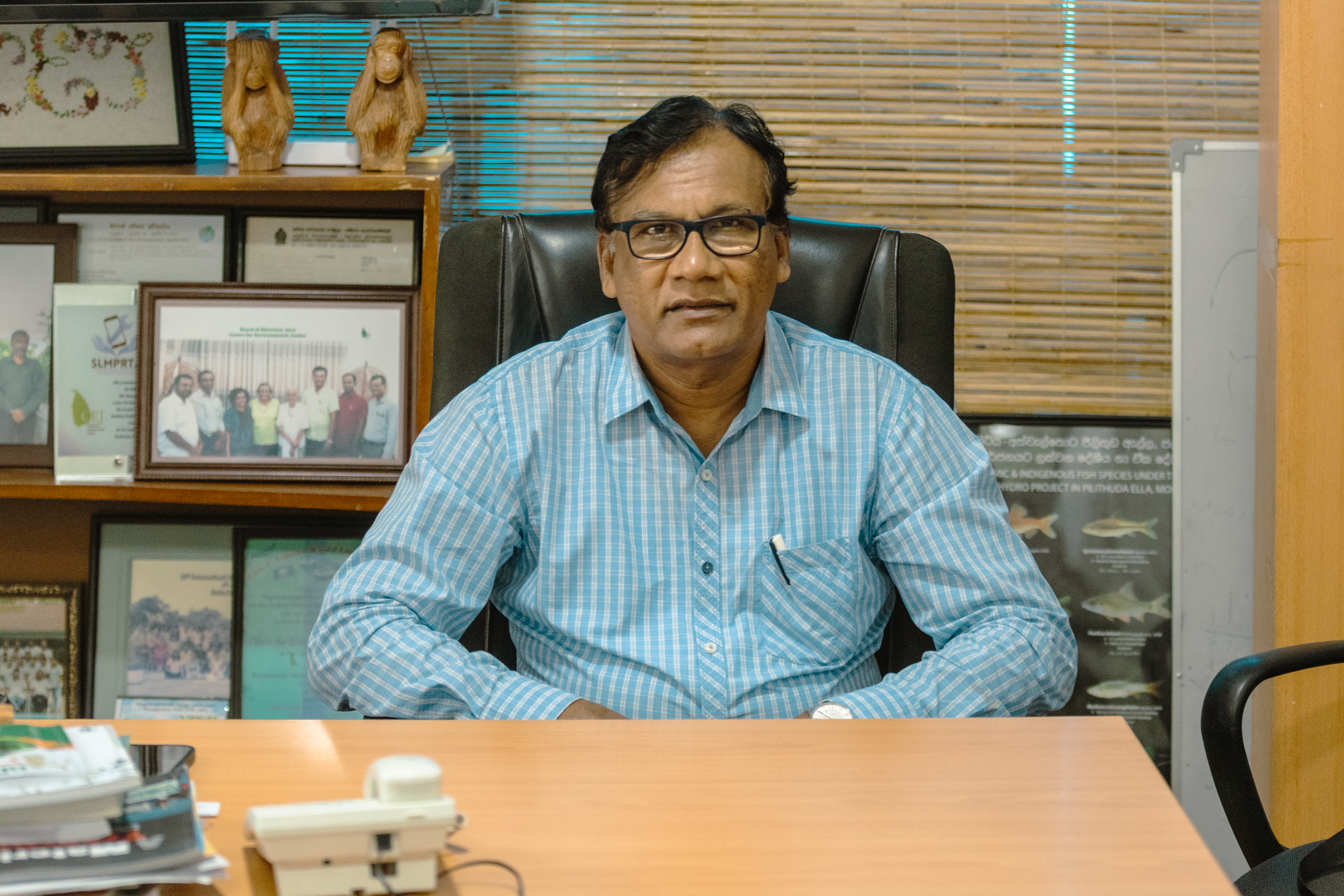
Hemantha Withanage, executive director and senior environmental scientist at the Center for Environmental Justice in Colombo, has played a leading role as an environmental advocate on the nurdles pollution crisis in Sri Lanka. Photo by Nicholas Muller.
Persistent contamination fears have eroded consumer confidence in seafood, compounding economic and psychological stress of fishermen.
“We are still paying off the massive debts from when fishing halted,” says Malkanti, whose husband developed a serious heart condition and depression after the disaster.
Asia’s Plastic Boom Amplifies Risks
According to a 2023 OECD report, international trade and transboundary plastic waste movements contribute up to 65 percent of plastic found in coastal and island nations, most imported from external sources.
U.N. experts warn that without urgent agreements to curb plastic production, projected to rise 70 percent by 2040, global plastic waste could become unmanageable within a decade.
In mid-August 2025, U.N. negotiations for a global plastics treaty collapsed after delegates failed to agree on specifically binding measures addressing marine waste and plastic pellets.
Sri Lanka joined over 100 nations advocating production limits and binding nurdle regulations, while India sided with oil-producing countries like Saudi Arabia and Russia, emphasizing recycling and waste management instead. Ultimately, no binding international framework governs the full plastic supply chain.
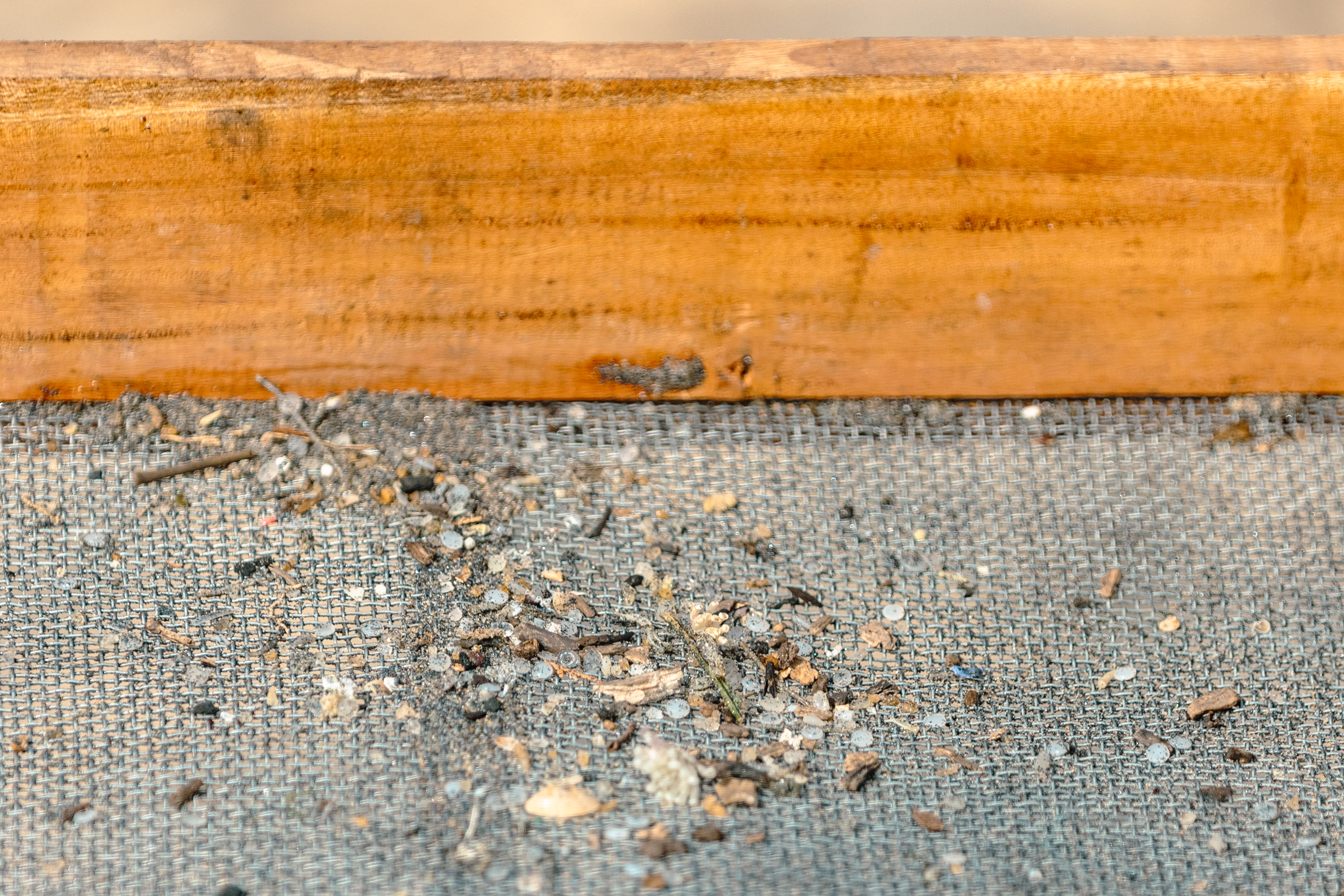
Plastic nurdles, each about the size of a lentil, are collected in a metal sieve. They are believed to have originated from the MSC Elsa shipwreck in May 2025. Photo by Nicholas Muller.
Sri Lanka has urged the International Maritime Organization to classify nurdles as hazardous under the Dangerous Goods Code since the X-Press Pearl spill. This classification would mandate strict transport protocols and emergency response measures similar to those for explosives and flammable substances.
India opposes binding nurdles regulations, viewing them as raw materials rather than waste. Instead, India supports only voluntary measures, a stance criticized by environmentalists for downplaying risks to marine ecosystems and pushed at the Geneva talks to remove treaty provisions on “releases and leakages.”
X-Press Feeders Executive Chairman Tim Hartnoll admitted the leak was caused by poor packaging identified by the crew while sailing through the Arabian Sea.
“Most nurdles were poorly packaged in 25-kg polybags that easily broke, dispersing contents across the ocean,” says Withanage. “Ships carrying large nurdle volumes must face stricter packaging and load regulations.”
A New Unfolding Nurdle Disaster: Kerala’s MSC Elsa 3
Anto Elias of the Kerala Independent Fish Workers Federation has long fought to protect traditional fishers, particularly since the MSC Elsa 3 sank off Kerala’s coast on May 24, 2025. The ship spilled millions of plastic pellets in a wide area from Kochi to Tamil Nadu’s Dhanushkodi, which are now showing up on Sri Lankan shores as well.
The vessel carried over 600 containers of hazardous materials including hydrazine and calcium carbide, and released oil, toxic chemicals, and nurdles into fishing grounds, damaging marine biodiversity and local trust in seafood safety. Subsequent fishing bans and equipment losses deepened the economic insecurity of people in affected panchayats (villages).
Kerala’s densely populated coastline is suffering from pollution and toxic discharges, which have further weakened already fragile fish stocks. As seen in Sri Lanka after the X-Press Pearl disaster, a fishing ban has been imposed, cutting off income for many fishing families. Women fish vendors, in particular, have lost access to markets, causing severe hardship by drastically reducing their household earnings.
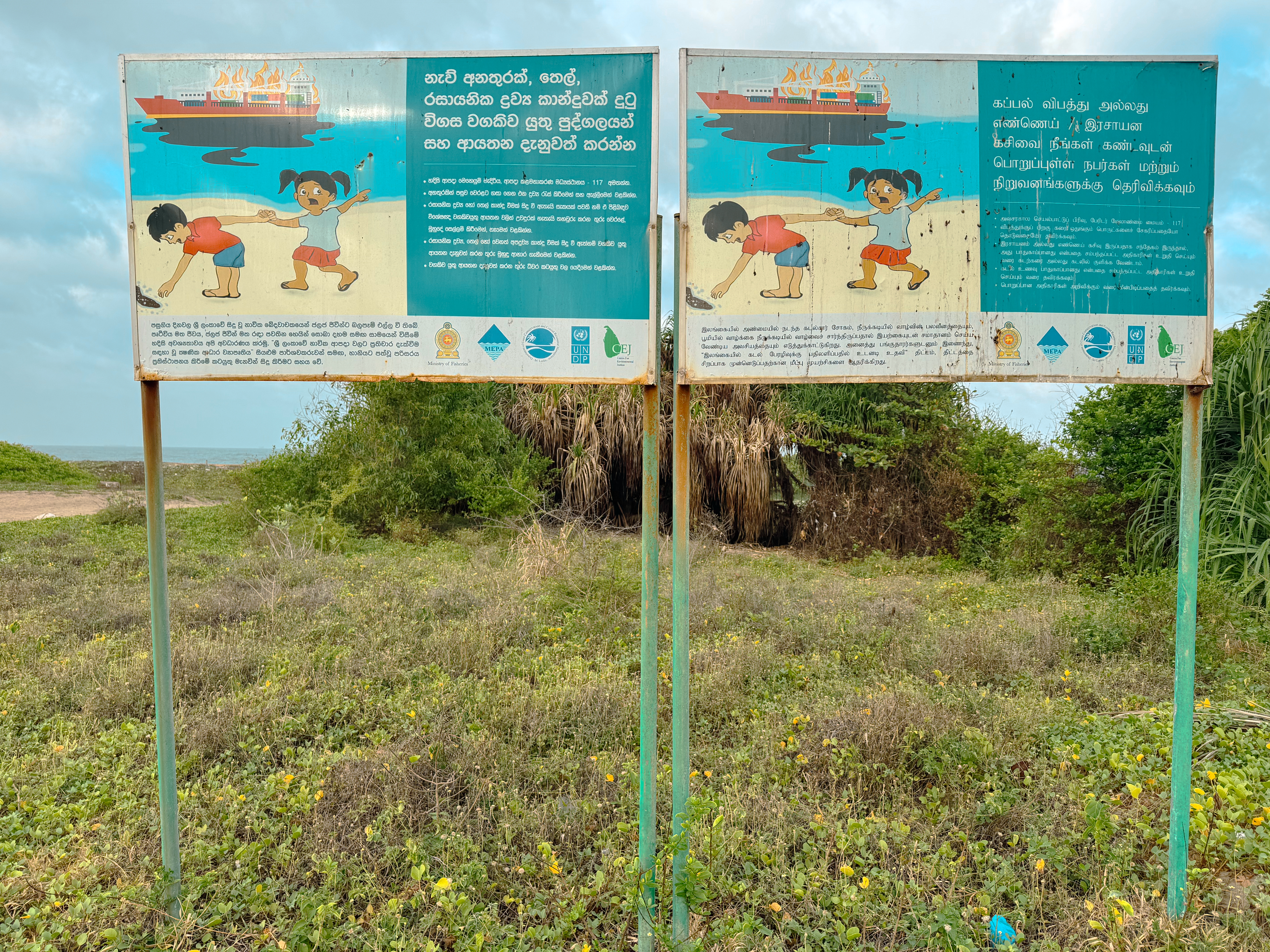
Signs in Sinhala and Tamil warn people against collecting and handling debris washed ashore on Sarakkuwa beach. Photo by Nicholas Muller.
“The major issue with the sinking of the ship was that very little transparency was exercised by the government in telling the people what the cargo was,” Verghese adds.
Traditional fishers relying on small-scale nets also suffered gear losses worth up to 300,000 Indian rupees per net as debris and submerged containers entangled equipment. Elias explains, “Fishing is impossible now with containers in the sea. They have lost their livelihoods.”
“Despite the disaster’s scale, neither MSC (Elsa), Adani Port, nor the government authorities have taken meaningful steps to remove submerged containers or disclose their contents,” says Elias. Elias’s union has sought corporate accountability, immediate funding for cleanup efforts, and fair compensation for the affected fishermen.
Fishermen’s incomes fell from roughly 14,000–15,000 rupees to about 5,000 after the collapse, prompting many to stop visiting markets within the banned fishing zone. Women’s fish-related earnings declined by an estimated 62 percent.
“What the Kerala government offered was a thousand rupees compensation, which was quite inadequate. We also looked into whether women were receiving it, since men do the fishing and women handle the marketing. The impact of fish scarcity hurt both,” he notes.
Activists say there is an ongoing battle against the Adani port in Trivandrum, with fishermen blaming the port for significant land erosion and displacement for coastal villages.
“Particularly the coastal villages in Trivandrum, which are highly dense, have been losing homes and land because of erosion linked to this port. The fishermen here have generally been on a warpath against the port,” says Maju Verghese of Friends of the Earth India.
Kerala’s coastline has already been under severe climate induced stress and human activity. The National Center for Sustainable Coastal Management’s shoreline change assessment reports that 63 percent of the state’s coastline is experiencing erosion, most severely near Thiruvananthapuram.
According to a September Greenpeace report, the MSC Elsa has refused to accept responsibility or pay the $1.1 billion compensation demanded by the Kerala government.
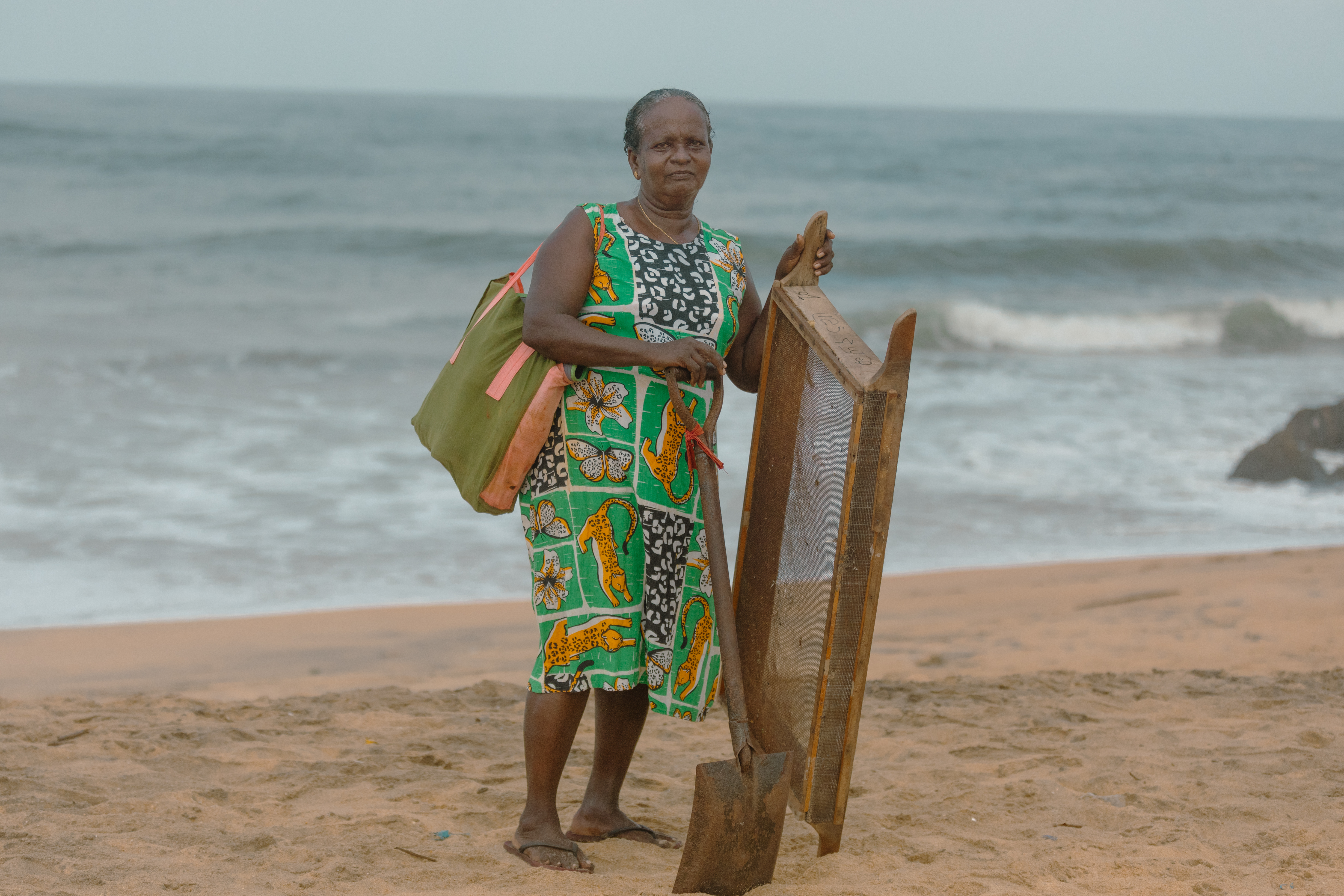
A woman from Negombo is seen with a sieve and shovel, which she uses to clean nurdles from the beach. Photo by Nicholas Muller.
A Complicated Transboundary Crisis
Environmental groups including the Pearl Protectors and Greenpeace report heavy nurdle pollution caused by the MSC Elsa has now shown up along Sri Lanka’s north and west coasts – in Jaffna, Mannar, Kalpitiya, Negombo, Colombo, Wadduwa, and Bentota – demonstrating how offshore spills create transboundary marine damages and wreaking havoc on ecosystems across national borders.
“Nurdles from the MSC Elsa are reaching Sri Lankan shores, spreading contamination beyond the original spill,” says Withanage.
Women collecting nurdles in Sarakkuwa note the whiteness and freshness of new pellets washing up since May, distinct from the older, brownish ones.
Anita Perera of Greenpeace says, “The impacts on fishers, environment, and corporate accountability show similar patterns between the X-Press Pearl and MSC Elsa cases. Legal and corporate frameworks have hindered community recovery.”
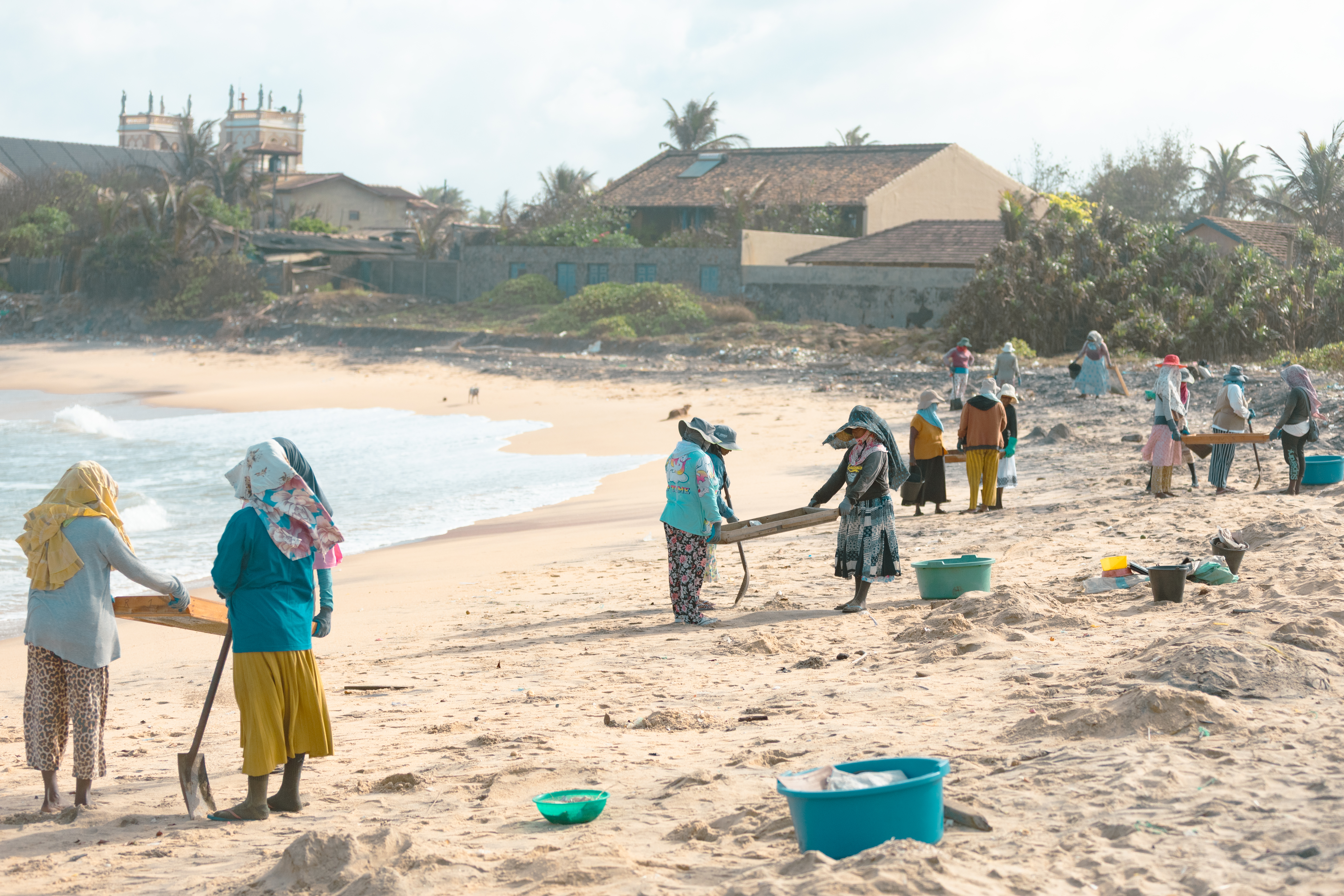
A crew of 30 women clean nurdles at Sarakkuwa beach in Negombo, Sri Lanka. Photo by Nicholas Muller.
A Vulnerable Future
In July 2025, Sri Lanka’s Supreme Court ordered Singapore-based X-Press Feeders to pay $1 billion in compensation for the 2021 disaster, with $250 million due by September 23, which the company refused to pay.
CEO Shmuel Yoskovitz argued the judgment threatens established liability frameworks critical to maritime trade. Sri Lanka plans legal action after missed payments by X-Press, consulting the attorney general on next steps including potential contempt proceedings.
The U.N. office in Colombo told AFP that the “polluter pays” principle is embedded in international accords, such as the U.N. Convention on the Law of the Sea.
To the frustration of Sri Lanka, to this day, plastic nurdles are still not classified as hazardous by the International Maritime Organization.
“These plastic pellets will remain for over 100 years—they neither dissolve at sea nor on land,” says Elias.
Greenpeace’s Perera stresses the urgent need for robust safety mechanisms and regulations to prevent fragile pellet packaging from breaking and spreading pollution in the future.
“These plastic bags around the pellets are fragile. When containers fall out, they easily break and spread. Rules and regulations need to ensure proper mechanisms and safety nets. The Sri Lankan government has requested that plastic pellets be identified as a hazardous material,” she says.
The twin maritime tragedies in Sri Lanka and Kerala, separated by four years, are now connected by a transboundary crisis and regulatory failures at the international level will continue to pose a great risk to coastal communities and ecosystems in both countries.
“Insufficient regulation on nurdle and plastic transport has left marine ecosystems highly vulnerable, and promised protective frameworks have not materialized,” Elias says. “The ocean becomes a kind of dumping ground. ”













